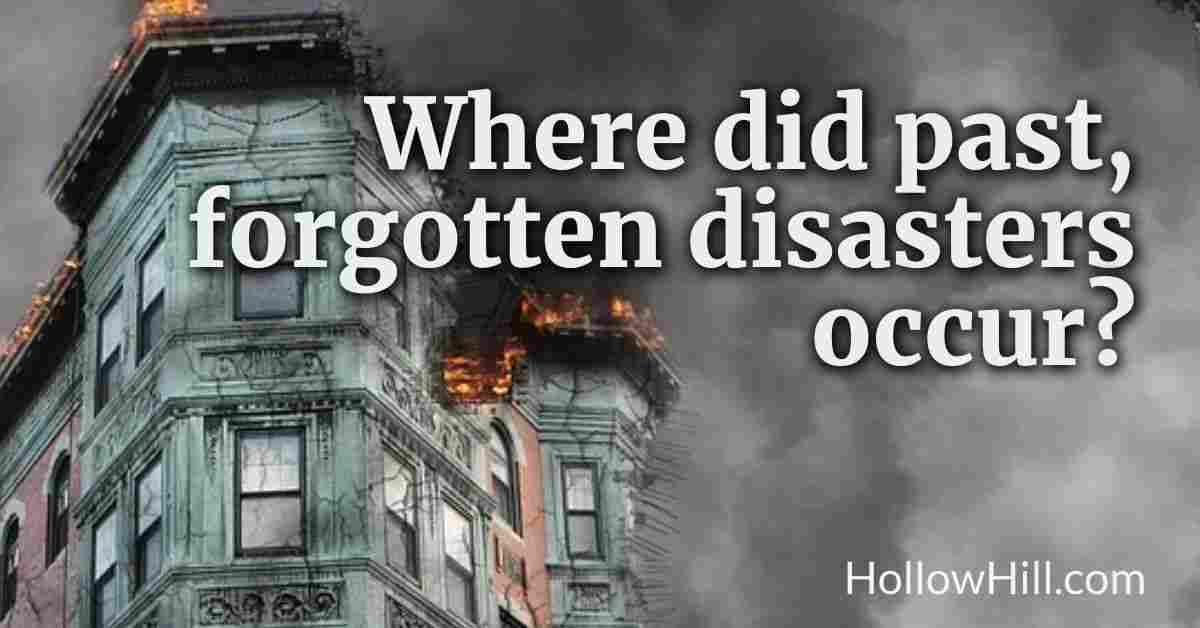As an Amazon Associate I earn from qualifying purchases. Click for details.
When you’re ghost hunting, do you know about haunted “outsider” sites?
Maybe you want to investigate a truly intense, chilling, haunted site… but you don’t know where to start.
So far, most “haunted” places…. Well, they weren’t so haunted, after all.
If you’re looking for a fresh place that’s truly haunted, and preferably nearby, I can help.
Sometimes, it seems like almost every place that’s been investigated — especially those featured on TV or a video site — is a big disappointment.
Or it’s okay…
…. But you want more.
-
-
-
-
- Stranger phenomena.
- Weirder vibes.
- A genuine fright or two.
-
-
-
That’s my specialty, and I’m about to share a very sneaky way to find haunts nobody else knows about.
Be prepared. This technique can lead you to locations that most people run from, in terror.
If you’re ready to try something different, and you’re especially brave — or foolhardy — here’s one of my favorite techniques.
Start with history.
In a previous article, I talked about the importance of identifying your community’s “outsiders” history, first.
That’s almost essential, if you’re looking for haunted places that no one else has explored.
- First, identify who the outsiders — groups and individuals — were.
- Then, research their lives and lifestyles.
- Then, you’ll be ready to explore where they lived (and sometimes died).
Here are 7 ways to find haunted “outsider” sites.
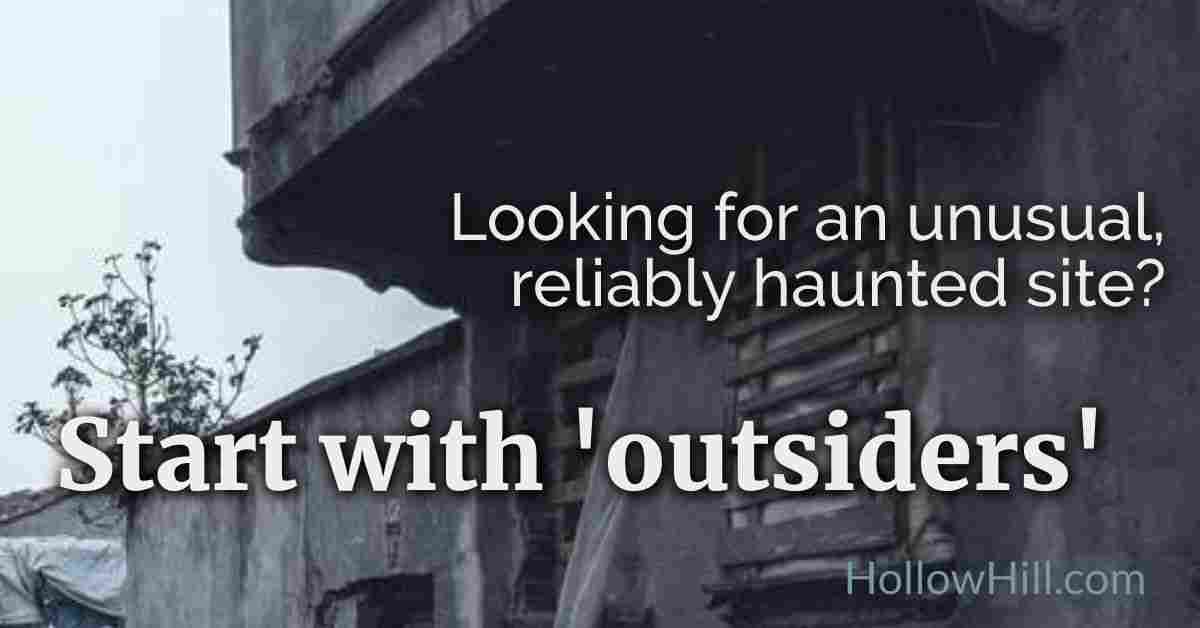
1. Where did ‘outsiders’ live… and die?
Outsiders often lived in tight-knit neighborhoods of their own. Often, their homes — if they could be called that — weren’t very nice.
Many were shabby tenements, slums, and hovels.
Of course, some of those neighborhoods have changed radically since then.
For example, much of Beacon Hill (Boston, MA) is luxury housing.
But, if you take a walking tour of the area, you’ll learn about several waves of immigrants and other “outsiders” who once lived there.
(You’ll find plenty of ghosts around Beacon Hill, but few residents will mention them. It could be bad for property values.)

Sometimes, a local walking tour (like architectural tours, not necessarily ghost tours) will be your best resource.
Tour guides often know about today’s buildings, but they may also know what used to be on that land… and what happened there.
Also, gentrified neighborhoods can be pure gold for ghost hunters.
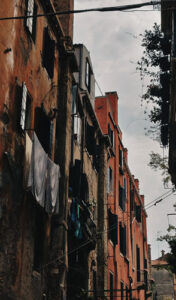
To locate “gentrified” neighborhoods, ask your local historical society, or at the local library’s reference desk.
(Here are a couple of articles about recent gentrified areas: LA and the other top 10 most gentrified zip codes in the US and The 10 Most Gentrified Cities in the UK. Some of them might have the kind of history you’re looking for.)
Ask local historians about underground dwellings, such as the vaults in Edinburgh, Scotland.
Where did homeless people live during the Depression and other challenging financial times? Did they sleep rough? Or, did charities take them in, or what?
Those homes – even if they were temporary – may harbor residual energy, or even a few ghosts. Ask local residents if they’ve heard about nearby places with “interesting histories.”
They may lead you to haunted outsider sites.
2. Ghostly workplaces
When we think of immigrants and brutal work conditions, most of us focus on factories. Without a doubt, the Industrial Revolution spawned tragedies that are the root of many of today’s hauntings.
Today, many of those empty factory buildings have been converted to loft apartments, condos, and offices. Some have credible ghost stories.
However, factories weren’t the only sites where terrible things happened.
Even a casual study of local child labor practices can be chilling, and highlight places you might find lingering spirits.
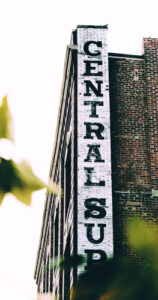
(I’m not sure if I’d want to research those sites. They could be profoundly sad.)
On a lighter note, take a fresh look at your community and study it for “ghost signs.”
Sometimes they name the business that used to occupy that building. That’s a great starting point for your research.
Other “ghost signs” linger, advertising large, nearby businesses. Go to your public library or historical society and ask for “city directories.” (They’re like phone books, but from before phones were in every home and business.)
Find out where those large (but now defunct) businesses once operated.
Tip: While you’re browsing local city directories, look for addresses of funeral homes, too. The ones that served “outsiders” probably didn’t survive past the mid-20th century, and many of those sites are eerily haunted.
3. Research large-scale disasters
Look for sites of floods, fires, tornadoes, hurricanes, earthquakes, and so on. Some may be well-known.
Others may have been lost among bigger, more recent headlines.
Look for weird, out-of-the-blue disasters, such as the Boston Molasses Flood.
I’ve often wondered about the lingering molasses odor some Bostonians describe, especially around the anniversary of the flood. Do remnants of the flood remain embedded in the streets, or is the odor paranormal?
Evidence of similar disasters and freak accidents may have vanished long ago, but ghosts, EVP, and residual energy can linger.

4. Houses of “ill repute” are reliably haunted.
Don’t overlook past brothels, “red light districts,” opium dens, gambling houses, and other sites where people broke the law. A person desperate enough to frequent those places, might also be desperate enough to kill… and that increases the likelihood of ghosts.
I’m reminded of a ghostly area of Ogden, Utah, where brothels once lined the street, and — even today — people describe the sound of coins being tossed from upstairs windows. Long ago, prostitutes used them to attract customers’ attention.
By day, that area is ho-hum.
After dark, I’m sure something haunts it.

5. Abandoned, haunted gaols, prisons, and hospitals are ideal.
Of course, in some cities and towns, your search might be simple.
Study old maps to find out where the jails (gaols) and prisons were, and where they buried their dead. Look for early workhouses and hospital sites, too.
The buildings might be gone, but their ghosts can remain.
Or, the bodies are still buried nearby, but their graves may be unmarked.
In fact, some “outsider” cemeteries are hiding in plain sight.
Walk around clearly identified cemeteries. See if a lesser-known cemetery is in the weeds behind it, or off to one side.
(I’ve found several that way, from Massachusetts to Florida, and from Texas to California. Some are among my favorite haunts.)
Wherever you find evidence of “outsiders,” you’re likely to find ghosts — or at least residual energy hauntings — as well.
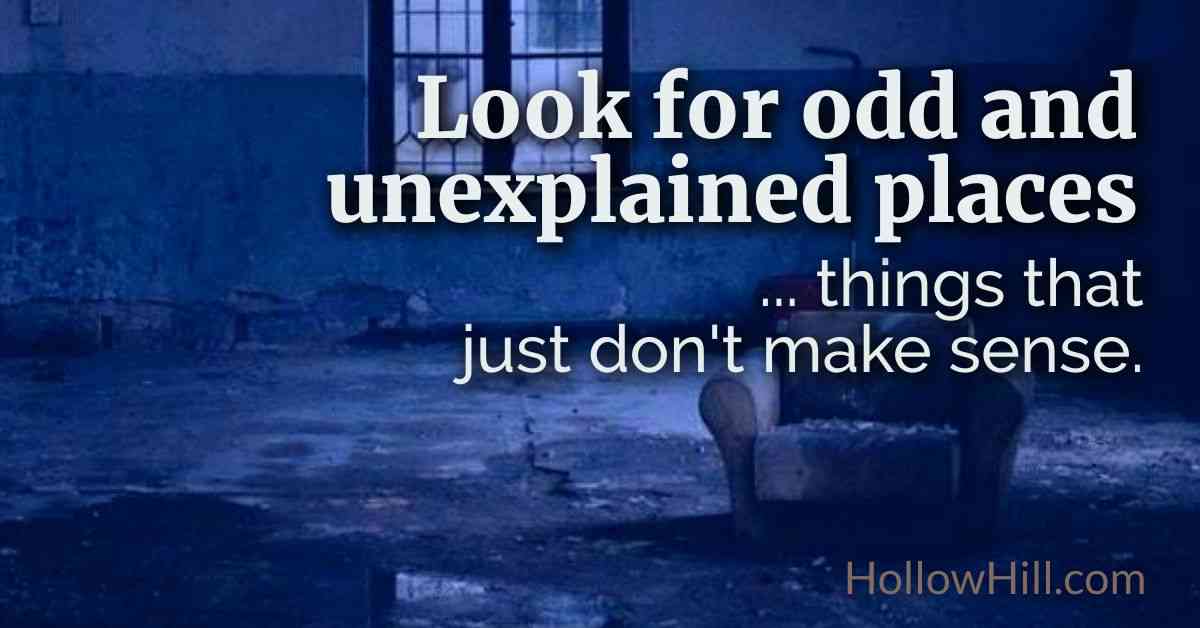
6. Start with what’s “odd,” and then dig deeper.
Sometimes, the fastest way to discover haunted, “outsider” sites is to look for what’s odd. And then explore that site’s history.
For example:
- Any cemetery that – when it started – was in the middle of nowhere. (Gilson Road Cemetery comes to mind.) Why did they keep those graves so far from the community?
- Pay attention to the perfectly good building site that’s empty, or the prime real estate location that’s a parking lot. (I researched an odd parking lot in downtown Austin, Texas. Why waste an ideal, downtown location on a rarely used parking lot? I spent weeks conducting library research to discover its story: The city’s own “Jack the Ripper” had killed a woman there. You can read that story in my book, The Ghosts of Austin, Texas.)
- Or, learn more about the apartment building or neighborhood that seems fine, but nobody wants to live there… so it’s abandoned.
For a couple of years, we lived in a lovely apartment in a serene, suburban location. We couldn’t understand when neighbors broke their leases shortly after moving in. Their excuses were… odd.
Then, researching local ghosts, I discovered our building was on a powerful ley line of haunted sites with eerie histories. In fact, some of my neighbors had powerful ghost stories to tell.
When we finally decided to move, the apartment complex was nearly deserted, despite being upscale, with magnificent views of rolling hills.
It was a classic, haunted outsider site.
When a site seems truly out of place, research its history.
Chances are, there’s a reason it stands out as “odd.”
That reason is likely to be a connection with a dark (and perhaps hidden) past.
That past can give you useful information for triggering ghost responses.
And, exploring related history, you may uncover additional haunts connected with those same outsiders.
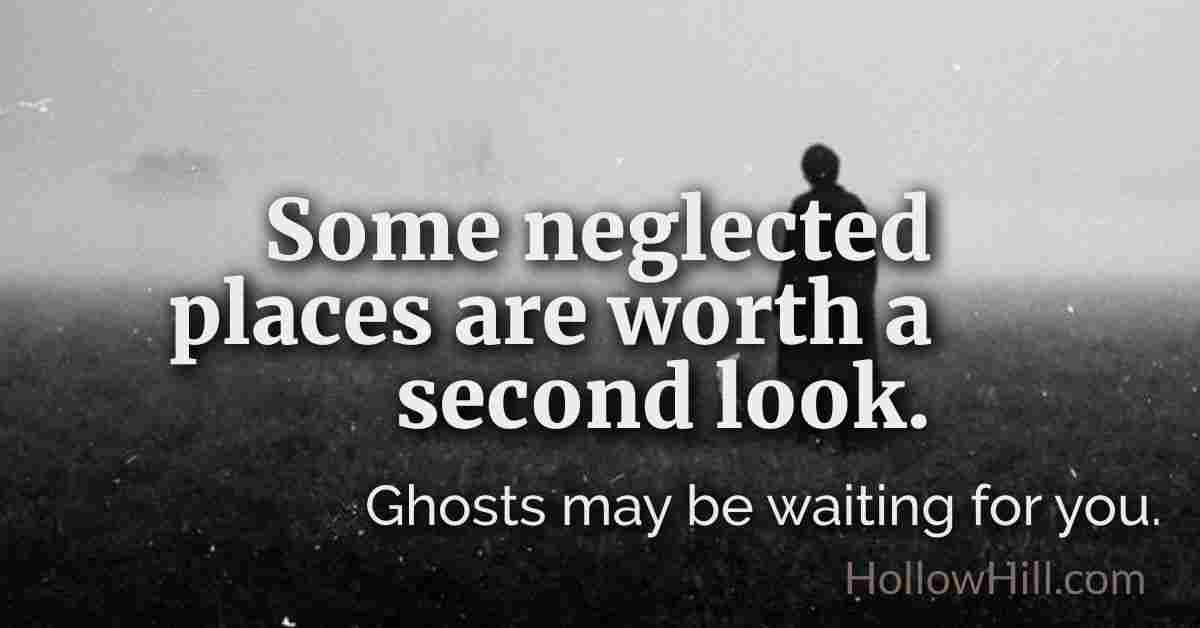
7. Some of the creepiest places…
From my research, some of the creepiest, haunted places are the ones no one has investigated yet.
That’s where the raw, ghostly energy is.
In those overlooked places, distraught spirits may be frantic to tell their stories and find closure.
Of course, you’ll find memorable ghosts of famous people in elegant homes and at well-manicured cemeteries.
Those may be the most reliable sites to research… but not always the most exciting.
If you’re going to visit “outsider” sites, be mindful of personal safety.
- Don’t linger in dangerous areas, even during the day.
- If your “gut feeling” tells you to leave any site, do so immediately. No ghost encounter is worth risking your life.
- Be especially careful on stairways. Some may be haunted, but poor carpentry and decaying stairs might be a larger concern.*
However, in many communities, the “bad neighborhoods” of the past are among the most upscale areas now.
If you check history and ask the right questions, you might discover a terrifyingly haunted “outsider” site, close to where you are right now.
For MORE tips to help you find haunted places near you, see my YouTube channel, Ghost Hunting with Fiona Broome.
*If a stairway MIGHT be haunted, watch this video before investigating.


